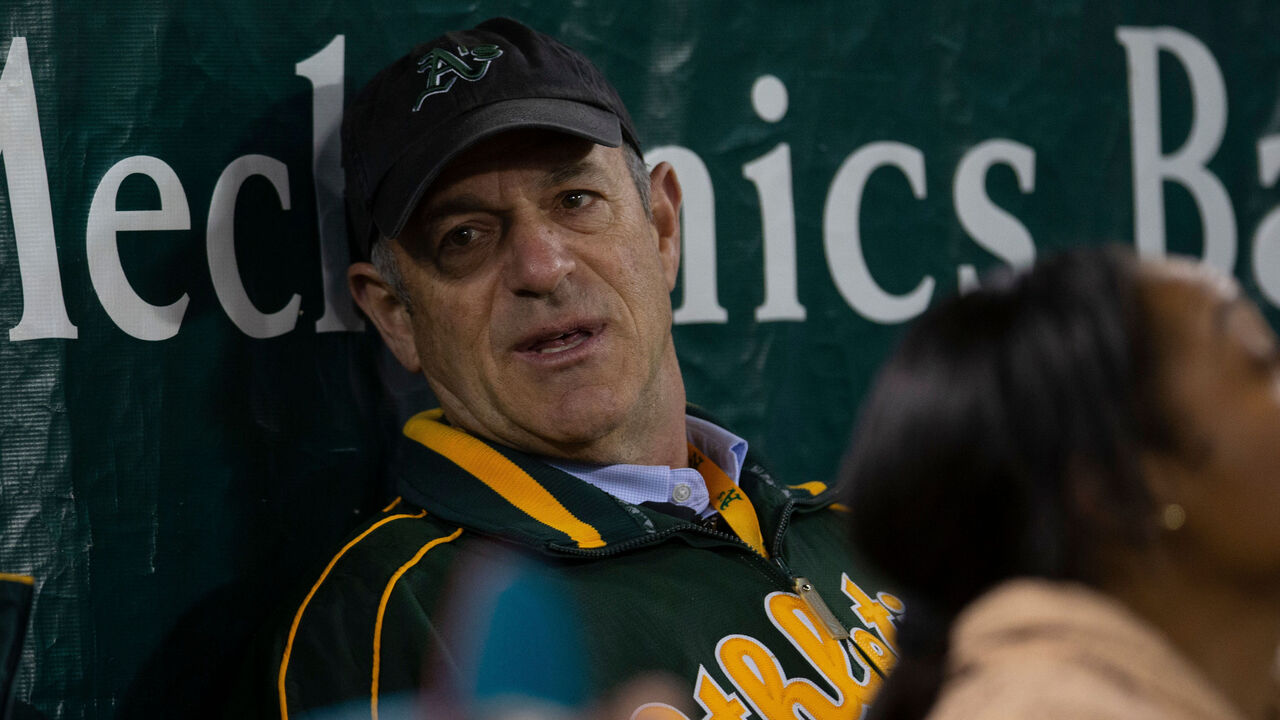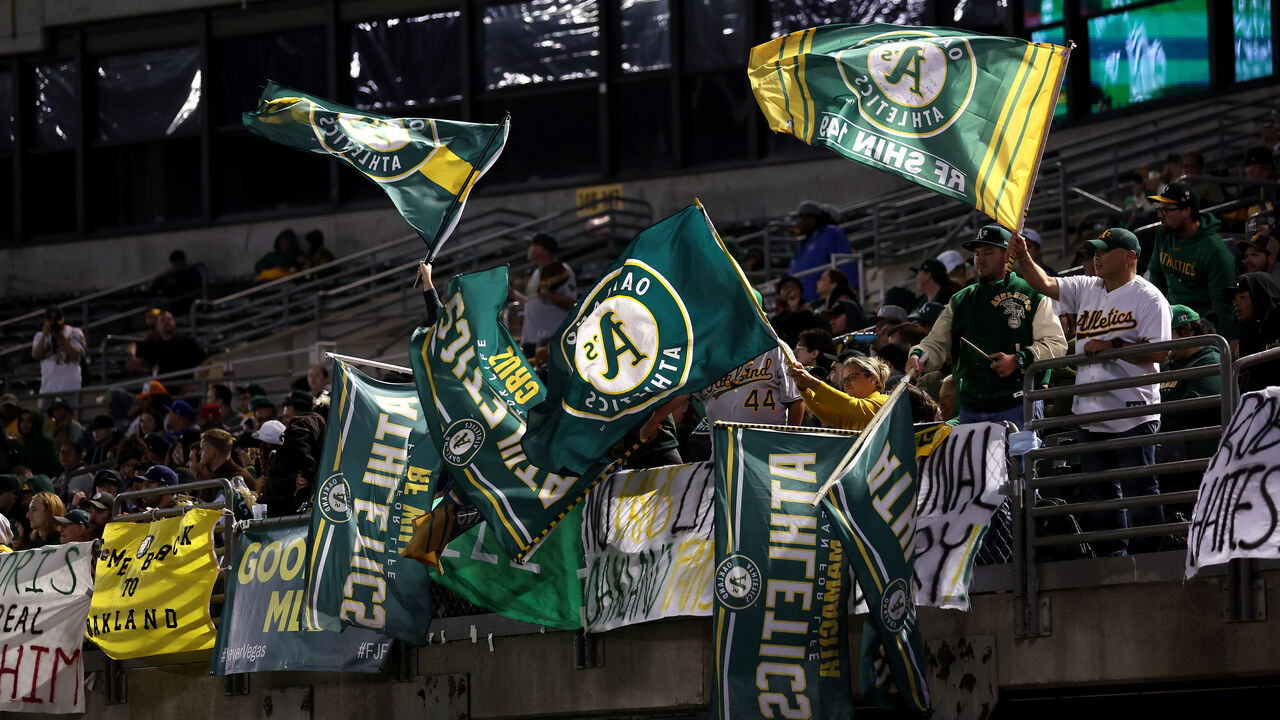Oakland still deserves baseball. Make it happen, MLB
A year before John Fisher's parents began selling jeans at an Ocean Avenue storefront in San Francisco in 1969, the Athletics arrived across the Bay in Oakland.
The Fishers built those early Levi's sales into a retail empire we've come to know as the Gap. The son's inherited stake in his parents' business led to enormous wealth, and he bought a majority stake in the A's in 2005.
As a kid, Fisher's parents nicknamed their son "Harpo," according to a San Francisco Chronicle profile of the reclusive owner: "He'd 'harp' on them until he got what he wanted," Todd Wallack wrote.
Fisher finally got what he wanted from MLB last year, reaching an agreement to move the club to a partially publicly financed stadium in Las Vegas, though a shovel has yet to break the ground.
That sequence of events led to Thursday, the last game the A's will play in the East Bay after 57 years - longer than their tenures in their birthplace of Philadelphia (1901-54) or Kansas City (1955-67).

The Oakland Coliseum was sold out and sorrow-filled Thursday. On one last sunny afternoon at the sprawling, badly aging, multipurpose facility, the fan base said goodbye and expressed its grief and anger.
Some people tore out rows of seats Wednesday night, rusty from years of neglect. Other fans asked players and coaches to fill empty water bottles with warning-track dirt. They obliged. Some players collected their own souvenirs of the infield clay, too. Some members of the crowd played drums and horns for the final time, providing the unique sounds of a major-league ballpark that will now go silent.
I mean look at this pic.twitter.com/rDOB66y4BU
— Ben Ross (@BenRossTweets) September 26, 2024
Despite the defeatist messaging from Fisher and his camp in recent years, there are fans here. Generations of them. And they do care.
So many people in the baseball world wish Fisher had made a different choice. And it is a choice to move the Athletics from Oakland - his choice.
Fisher, who rarely makes a public appearance, released a letter to A's fans this week that said: "We tried."
It's not clear who the "we" are, or how much trying there was in recent years. Did he really consider every possible location in the 738 square miles of Alameda County? While California is not the easiest place in which to build, many observers thought he seemed to be dragging his feet and looking for reasons to leave.
Last April, Oakland officials told ESPN reporter Tim Keown they thought they were close to securing the final public funding for the Howard Terminal project before the A's pivoted to Las Vegas. Just a $36-million difference remained between the parties. City officials had made their case and secured hundreds of millions of public dollars. Fisher claims it was too late and too difficult to build at the location.
But Fisher could have kept working with Oakland. There was no deadline other than the one inserted in the most recent CBA between the players' union and MLB, which specified the A's would be excluded from the revenue-sharing system if they didn't have a stadium agreement by January 2024. And that was nothing new; the franchise was first penalized in the CBA in 2016.

Fisher could have made other choices, too.
He could have sold the team for an immense profit: He bought the club for $180 million in 2005, and it is now worth $1.2 billion, according to Forbes.
Or he could have simply built his own venue as the San Francisco Giants did across the Bay, constructing the first privately financed stadium since Dodger Stadium.
Fisher did not have to do this, but he did.
His fellow owners were always going to rubber-stamp Fisher's move, even if some were privately disgusted by it. But MLB could make things right in Oakland.
Once the Athletics' and Tampa Bay Rays' stadium situations were resolved, commissioner Rob Manfred said the sport would expand to 32 teams. With those deals now complete, MLB can make sure Oakland is at the front of the expansion queue, provided it can build a new baseball home.
Ideally, no taxpayer dollars would finance a stadium anywhere. But perhaps a plausible deal could look something like this: An expansion team will be awarded in Oakland - or another East Bay municipality - if it's willing to match the average percentage of public support for the last four stadium deals in MLB (St. Petersburg, Florida; Arlington, Texas; Las Vegas; and Cobb County, Georgia).
The average public financial support for the construction of those facilities was 43% of the stadium cost (which averaged a total of $1.16 billion for those facilities).
Imagine soaring through the air to get to Opening Day 2023 at the Howard Terminal ballpark. 🚠https://t.co/mzCUVysa6r pic.twitter.com/B3cdwFjKG3
— Oakland A's (@Athletics) January 26, 2019
Cleveland supplies a precedent for this kind of deal: The day after the 1995 announcement that the Browns were leaving dilapidated Municipal Stadium for Baltimore, voters in Cuyahoga County approved an extension of a sin tax on alcohol and tobacco products to fund a new stadium.
Although the measure didn't keep the original Browns from leaving, it did create stadium funding that secured the expansion Browns.
It's not clear whether the political will to build a facility exists in Oakland. But having lost the NFL's Raiders, the NBA's Warriors (though they only moved across the Bay), and the Athletics since 2017, the city might be particularly motivated now.
A new ballpark would give Oakland a strong case as a baseball home. There's a reason the Bay Area was a two-team market for half a century.
The population of the East Bay is greater than that of the metro areas of Nashville or Salt Lake City - commonly cited as expansion candidates - and in line with Portland's. The region also comes with a ready-built fan base.

During their Bash Brothers heyday, the A's averaged 2.61 million fans per season - 32,253 per game - from 1988-92. In 1990, the A's drew 2.9 million fans, ranking second in the American League. In the four years before Fisher purchased the club (2001-04), the A's averaged 2.18 million fans - seventh of 14 AL teams.
There is also a tremendous amount of wealth in Silicon Valley. By GDP, the Bay Area ranked fourth in the U.S. in 2022.
Oakland is a good geographical fit as well. With 22 MLB teams in the Eastern and Central time zones, and just eight in the Pacific and Mountain, MLB would ideally add one expansion team in the West to balance travel and start times.
With a new facility and owner, Oakland would pack a ballpark just like San Diego has done in recent seasons - another market once deemed too small to succeed. Markets that have had a second chance in the majors - Kansas City, Milwaukee, Seattle, and Washington (the third time was the charm there) - have become stable, well-established franchises.
Ideally, the public would have a say - a vote - on a tax or another funding mechanism, assuming the Howard Terminal project can't be revived. But if there's a will to build a stadium, Oakland deserves a spot at the top of the expansion list.

While economic studies suggest stadium projects are losing bets for taxpayers, pro sports teams also become part of a community's fabric, helping create bonds among families and friends. And ancillary businesses benefit from their presence, too. It's tough to place a value on all of that, as we saw in this final series.
A's fans showed up this week. They let the baseball world and the commissioner's office know they were still there. They always were. They deserve a major-league team.
Travis Sawchik is theScore's senior baseball writer.